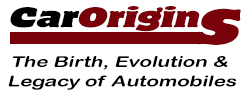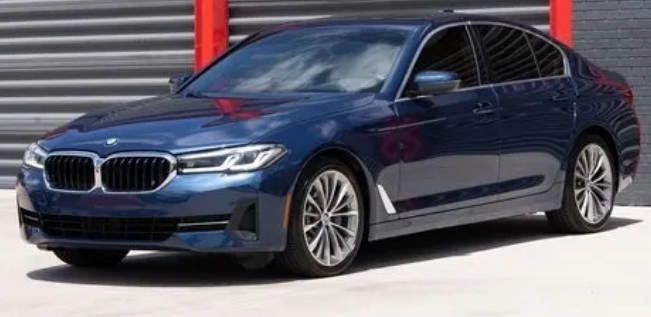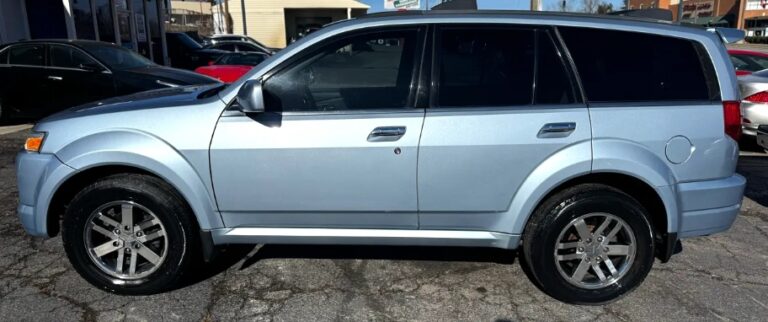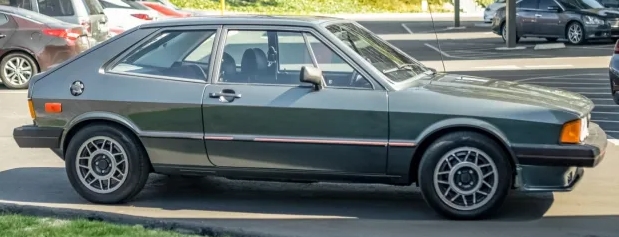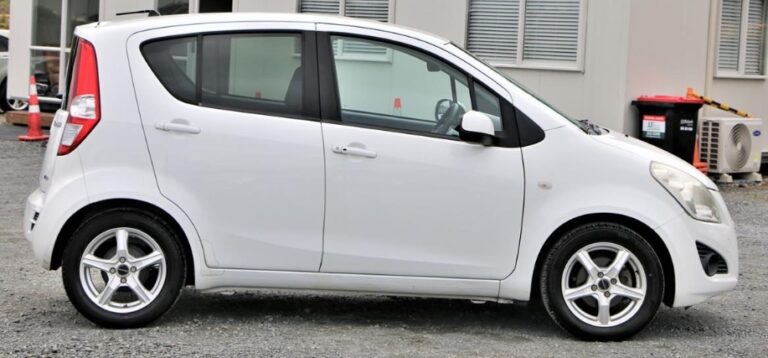The Evolution of the Renault Megane
The Renault Megane has long been a staple in the compact car segment, renowned for its blend of style, practicality, and technological innovation. Since its debut in the early 1990s, the Megane has undergone multiple generations, each marked by significant design shifts, technological advancements, and a broad spectrum of models and trim levels. This article provides a detailed chronology of the Renault Megane’s evolution, covering production years, model variants, and available trims across its history.
First Generation (1995–2002)
Introduction and Development
The Renault Megane first appeared in 1995 as a successor to the Renault 19. It was designed to rival popular compact cars like the Volkswagen Golf and Ford Escort, emphasizing modern styling and improved comfort.
Production Years: 1995–2002
Design and Features
- The first-generation Megane featured a rounded, aerodynamic shape, moving away from the boxier design of its predecessor.
- It was available as a three-door hatchback, five-door hatchback, sedan, and station wagon.
- Notable technological features included optional ABS and airbags, which were becoming standard in this segment.
Models and Trim Levels
Initially, the Megane was offered in several trim levels, which varied by market but generally included:
- RN: Base trim, basic equipment.
- RL: Mid-level trim, added features like power steering.
- RT: Higher trim with additional comfort features.
- RXE and RXE Plus: Sportier versions with more equipment.
- Sport: A sporty trim for enthusiasts.
Engines
The initial engine lineup comprised:
- 1.4L and 1.6L petrol engines.
- 1.9L diesel options.
- Later, more powerful variants like the 2.0L petrol were introduced.
Facelift
In 1999, a facelift refreshed the Megane’s front grille, headlights, and interior, aligning it with Renault’s evolving design language.
Second Generation (2002–2010)
Development and Launch
The second-generation Renault Megane was introduced in 2002, marking a significant evolution in styling and technology. It was built on the Renault/Nissan C-platform, sharing components with other models like the Nissan Almera.
Production Years: 2002–2010
Design and Features
- The design was more angular and modern, with a focus on aerodynamics and driver ergonomics.
- The body styles expanded to include coupe and convertible variants, alongside hatchbacks, sedans, and station wagons.
- The interior saw improvements in quality, with more advanced infotainment options.
Models and Trim Levels
Trim levels varied across markets but generally included:
- Expression: Basic trim with essential features.
- Authentique: Slightly better-equipped version.
- Dynamic: Sportier trim with additional equipment.
- Privilege: Higher trim with luxury features.
- Initiale: Top-tier trims with premium features like leather seats and advanced audio systems.
Special Variants
- Renault Megane Coupé: A sporty two-door version introduced in 2003.
- Renault Megane CC (Coupé Cabriolet): Launched in 2003, offering open-top driving.
Engines
The second-gen lineup expanded to include:
- Petrol: 1.4L, 1.6L, 2.0L, and turbocharged variants.
- Diesel: 1.5L dCi (common rail turbo diesel), 1.9L dCi, and later 2.0L dCi engines.
Facelift and Updates
In 2006, the Megane received a mid-cycle facelift, which included:
- Updated front grille and headlights.
- New taillight designs.
- Interior upgrades, including improved materials and technology.
Performance and Special Models
- RS (Renault Sport) versions were introduced, with the Megane RS 225 and later RS 250, offering sport-tuned suspension, aggressive styling, and high-performance engines (notably the 2.0L turbocharged petrol engine).
Third Generation (2010–2022)
Development and Introduction
The third-generation Megane debuted in 2010, built on the Renault–Nissan Common Module Family (CMF) platform, emphasizing efficiency, modern styling, and technological innovation.
Production Years: 2010–2022
Design and Features
- The styling was more sculpted and contemporary, with a focus on aerodynamics and premium appearance.
- Offered in hatchback, sedan, coupe, and station wagon (Estate) variants.
- Inside, it boasted improved ergonomics, high-quality materials, and advanced infotainment systems, including touchscreen displays and driver assistance features.
Models and Trim Levels
Trim levels varied by market but typically included:
- Expression: Entry-level, basic features.
- Iconic: Mid-range with enhanced features.
- Life: Focused on affordability.
- R.S. Line: Sport-inspired trim with unique styling cues and sportier suspension.
- Initiale Paris: Top-tier trim with luxury features, leather upholstery, and advanced tech.
Special Editions and Variants
- Renault Megane GT: Sportier model featuring a turbocharged petrol engine, sport-tuned suspension, and distinctive styling.
- Megane RS (Renault Sport): The high-performance hatchback, renowned for its sharp handling, turbocharged engines, and rally-inspired styling. The RS 265, RS 275 Trophy, RS 300, and later RS 300 Trophy versions were notable.
Engines
The engine lineup included:
- Petrol: 1.2L TCe turbocharged, 1.4L TCe, 1.6L, 2.0L, and 1.8L turbo options.
- Diesel: 1.5L dCi, 1.6L dCi, 1.7L Blue dCi, and 2.0L dCi.
Technological Advancements
- Introduction of Renault’s Easy Link infotainment system.
- Advanced driver-assistance features like lane departure warning, adaptive cruise control, and parking assistance.
- Improved fuel efficiency and reduced emissions across engine choices.
Facelift and Updates
In 2016, the Megane received a significant facelift, including:
- New front grille, headlights, and bumper design.
- Updated interior with a larger touchscreen.
- Enhanced safety features.
Electric and Hybrid Options
While primarily ICE-powered, the third-generation also saw the introduction of mild-hybrid technology (E-Tech Hybrid) in later years, emphasizing Renault’s shift towards electrification.
Fourth Generation (2022–Present)
Introduction and Overview
The latest Renault Megane was unveiled in 2021 and launched in 2022, representing the next step in Renault’s compact car evolution. It features a more modern, aerodynamic design, advanced technology, and a move towards electrification.
Production Years: 2022–present
Design and Features
- The design is sleek, with sharp lines, a digital-first interior, and LED lighting signatures.
- Offered as a hatchback and estate (Sport Tourer).
- The interior emphasizes digital instrumentation, large touchscreens, and connectivity.
Models and Trim Levels
The lineup includes:
- Iconic: Base trim with essential features.
- Evolution: Mid-range with added comfort and tech.
- S Edition / R.S. Line: Sportier trims with distinctive styling cues.
- R.S. (Renault Sport): High-performance version, continuing the tradition of sporty variants.
Powertrain Options
- Petrol: 1.3L TCe turbocharged engines.
- Hybrid: E-Tech full hybrid systems combining petrol engines with electric motors for improved efficiency.
- Plug-in Hybrid (PHEV): Available in some markets, offering all-electric driving for short distances.
Technological Innovations
- Advanced driver assistance systems such as adaptive cruise control, lane keep assist, and traffic sign recognition.
- Connectivity features including wireless Apple CarPlay and Android Auto.
- Enhanced safety with multiple airbags, automatic emergency braking, and parking assistance.
.
MANY auto lovers not only spend time in their garages to tinker on their autos, but have other projects going on in there as well. Wood working is a popular pastime for the creative type of individual. Not sure what to make next? Or thinking about getting into this kind of hobby? There’s lots of possibilities… Here’s some of them…

.
Summary of Key Milestones
| Generation | Production Years | Notable Models & Variants | Key Features & Updates |
|---|---|---|---|
| 1st Gen | 1995–2002 | Hatchback, Sedan, Wagon, Sport | Rounded design, early tech, facelift in 1999 |
| 2nd Gen | 2002–2010 | Coupe, CC, RS, Initiale | More angular styling, turbo diesel engines, sport models from 2003 |
| 3rd Gen | 2010–2022 | GT, RS, Initiale Paris | Modern styling, tech, hybrid options from late 2010s |
| 4th Gen | 2022–present | Hatchback, Estate, RS | Sleek design, hybrid and electric variants, advanced tech |
Conclusion
The Renault Megane’s evolution encapsulates a journey from a modest compact hatchback to a sophisticated, technology-driven vehicle. Each generation has reflected contemporary automotive trends, from aerodynamic styling and comfort to efficiency and electrification. The model’s broad spectrum of trims and variants has allowed it to cater to diverse customer preferences, from budget-conscious buyers to performance enthusiasts.
Throughout its history, the Megane has maintained Renault’s commitment to innovation, safety, and style, ensuring its place in the competitive compact car segment. As it continues into its latest iteration, the Megane remains a symbol of Renault’s design philosophy and technological ambitions, poised to adapt to the future of mobility.

